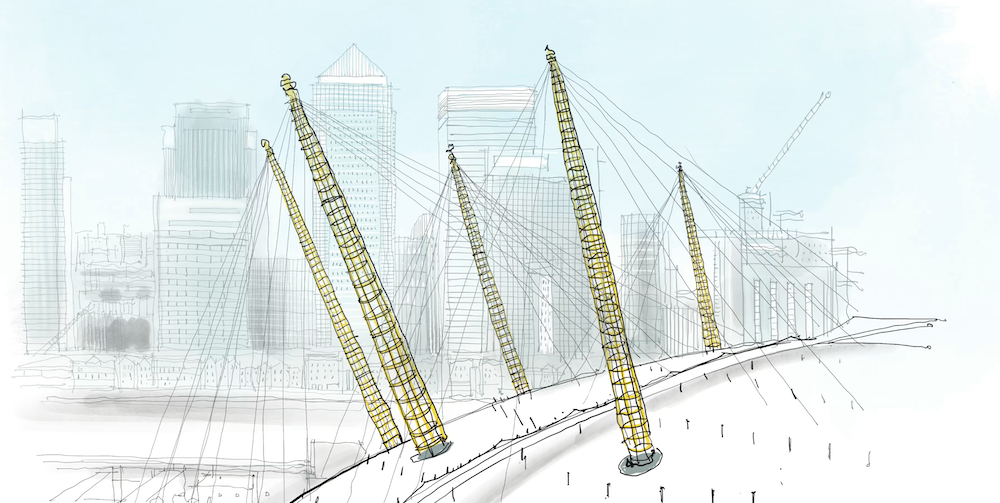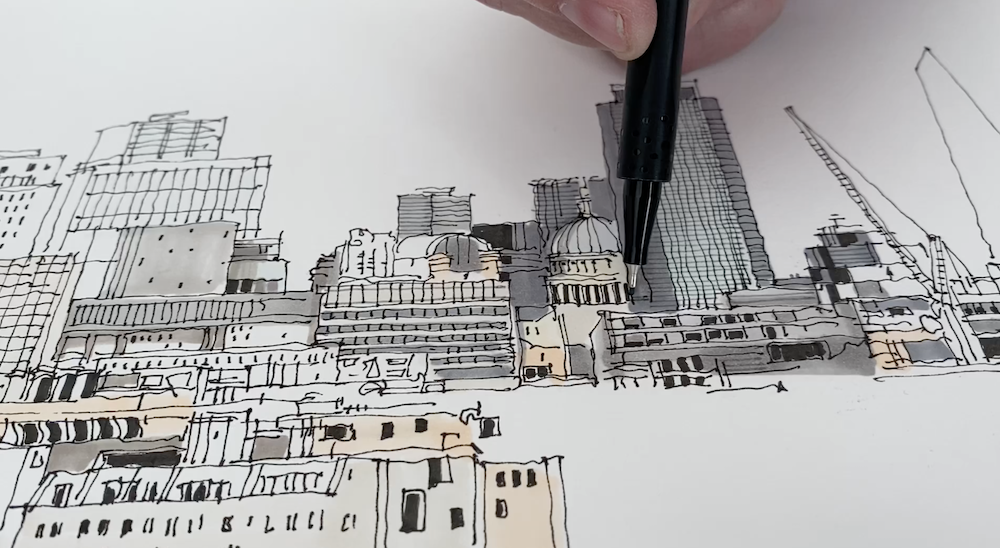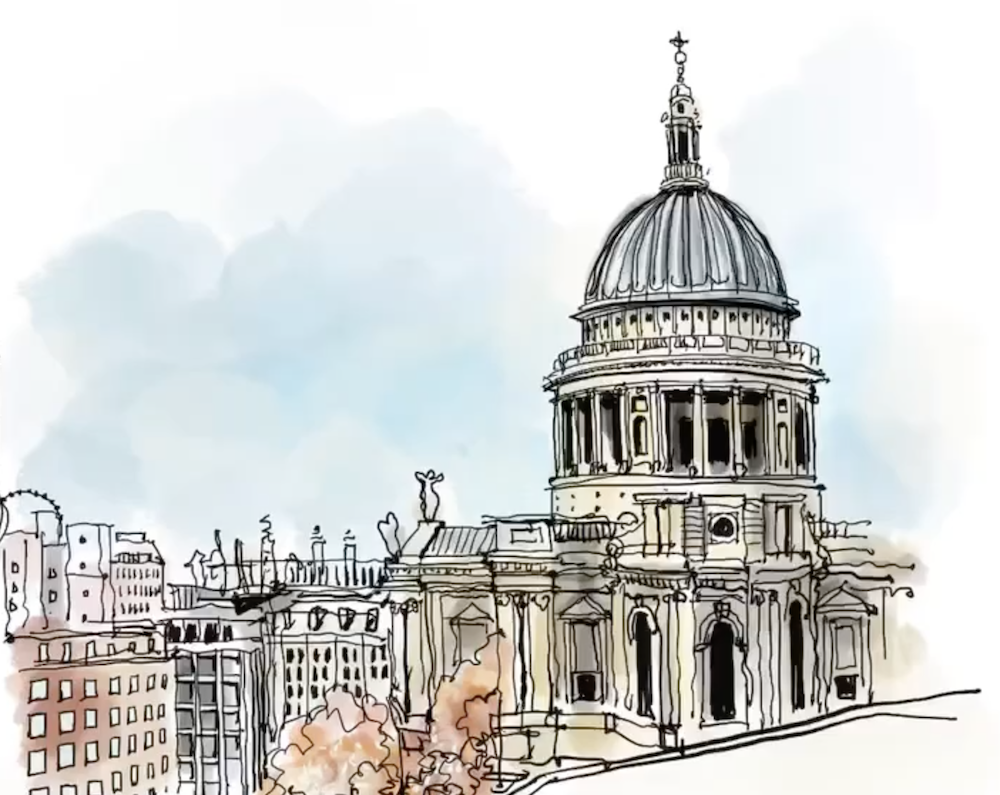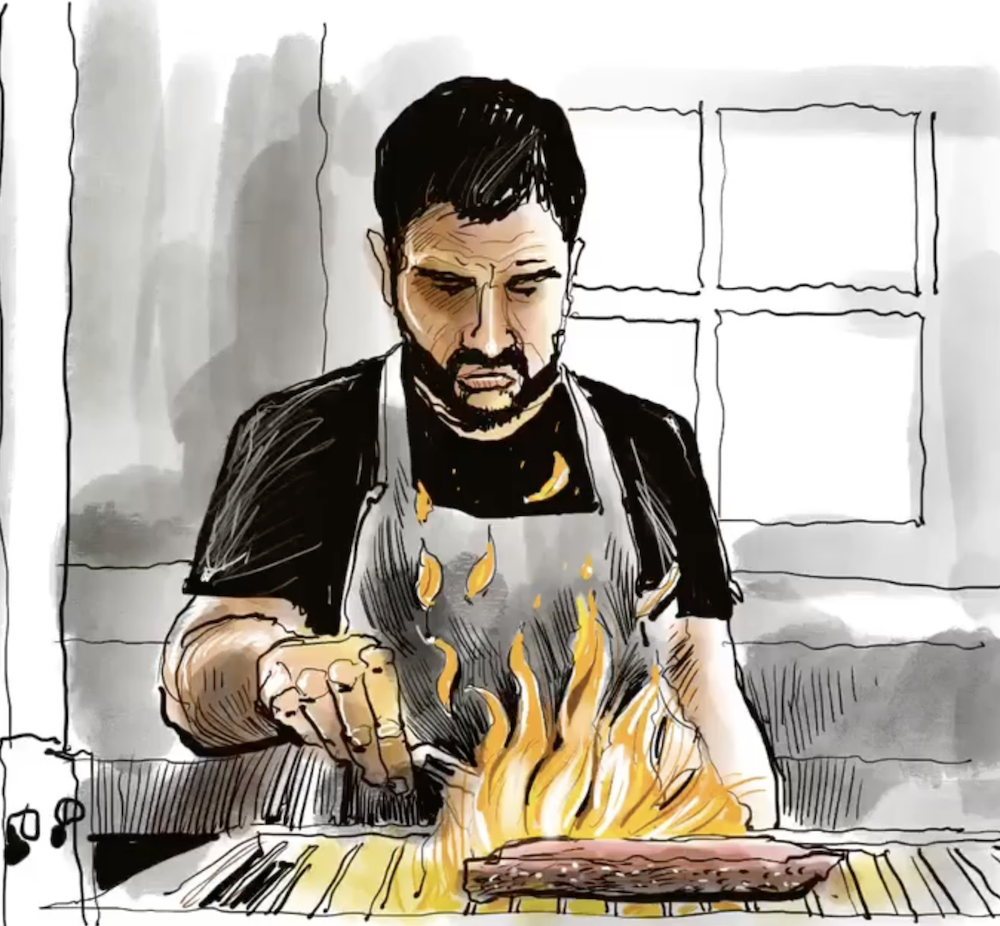Sketch Your World: Drawing The Details
‘Sketch Your World’ is a collaboration between artist Phil Dean and AccessArt, aimed at helping students 16 and above be inspired by their local landscape.
In this post Phil shares his top tricks for capturing the details of a scene to elevate his drawings. Watch the videos below and try the challenges at the bottom of the post.
Brickwork
When you look closely at bricks on a building, you’ll notice that they are not entirely uniform. While they are all largely the same size and laid in the same way, they vary slightly in colour and texture, and it is important to represent this variation in your sketching. A top tip for colouring brickwork is to start with a medium colour that represents the entire wall and then add a darker and a lighter shade for the variations. If the mortar that binds the bricks is lighter than the bricks themselves (often it is), use a lighter shade or even white to draw in the brick
Texture
Adding further texture gives additional depth and realism to a sketch. Look carefully at your subject and see if there are details that should be added, then think about how this detail could be shown with the materials available to you. If the texture is fundamental to a scene, then make a feature of it, but if it’s supplementary detail that is not essential to the story, then make it a background feature.
 Wobbly Lines
Wobbly Lines
A top tip when drawing the hard, clean lines of architecture is to try not to make your lines too straight. This may sound counterintuitive, but it helps you to be more relaxed when sketching imposing scenes and gives you some artistic licence to interpret what you are seeing.
This line work drawing would be quite uninteresting if all the lines of the buildings were straight and precise. It is a great example of box-like buildings getting the wobbly line treatment. The lines create character and will give you the freedom to build the scene without being overly concerned with accuracy. This technique encourages a lateral-thinking approach to sketching.
 Trees and Shrubbery
Trees and Shrubbery
Including trees and shrubbery in a sketch can provide an effective contrast to hard architectural edges. Different approaches need to be used depending on the time of year. Deciduous trees in winter become spidery and intricate, but in the summer they are almost cloud-like. Good technique is required to make them look believable, but persevere as the addition of trees is worth the effort in the overall sketch.
![]() Winter trees can be fun to sketch, just make sure that you try to show the tree itself and how the branches get more delicate towards the outer limbs. Use fine lines and small dashes to illustrate the sparseness of winter branches.
Winter trees can be fun to sketch, just make sure that you try to show the tree itself and how the branches get more delicate towards the outer limbs. Use fine lines and small dashes to illustrate the sparseness of winter branches.
![]() Shadow
Shadow
The addition of shadow will always add dynamism and a touch of realism to a sketch. Shadows don’t always have to be completely realistic in terms of their depth and strength, but they are mostly essential to any drawing.
Hard sunlight delivers drama and impact when it hits detailed stonework. In this sketch, the shadow is built
out from the features of the stonework, combining the use of a solid black marker and a white highlight pen to create dramatic contrast.
 Highlights
Highlights
In urban sketching, white highlights can be deployed in a number of very effective ways. The trick is to add white at the very end of the process to add that final hint of detail that will bring everything together.
 White highlights need be only gestural, but their impact on a sketch can be significant. In this sketch they pick out the architectural detail, describe the lighting and create movement and contrast. In the images above, I used a white gel pen for the strong highlights and a white pencil to add softer lighting to areas such as the column.
White highlights need be only gestural, but their impact on a sketch can be significant. In this sketch they pick out the architectural detail, describe the lighting and create movement and contrast. In the images above, I used a white gel pen for the strong highlights and a white pencil to add softer lighting to areas such as the column.
Challenge:
Go back through some of the work created throughout the Sketch Your World project. Work back into some of your drawings, adding some of the details mentioned above and see how it changes the drawing.
Extension Challenge:
Select one or two of the techniques I’ve just described and create a piece of artwork from real life or a photo and use those techniques when creating the drawing itself. It can be essential to the drawing, or just a detail around it, but I want you to use the technique to really bring the drawing to life.
When you’ve finished, lay out your work and discuss in a group the impact of the added details and think about how adding other techniques could also elevate the drawing.
‘Sketch Your World’ is a collaboration between artist Phil Dean and AccessArt, aimed at helping students 16 and above be inspired by their local landscape.
<< Go Back to Sketch Your World
